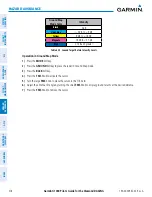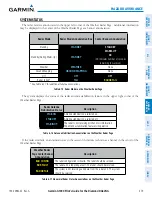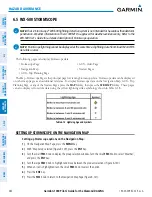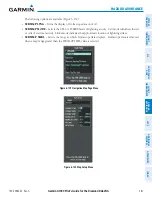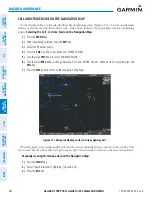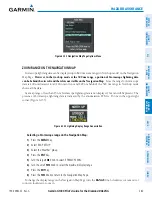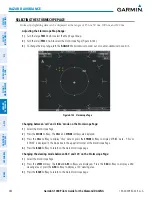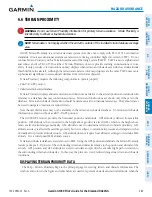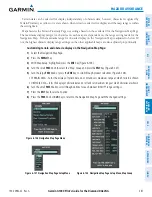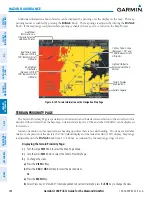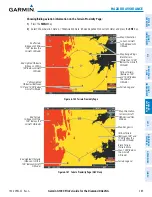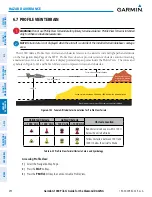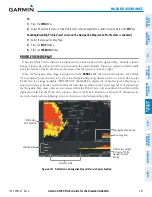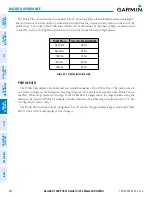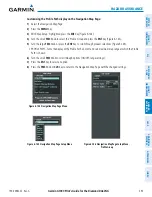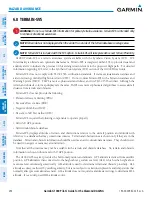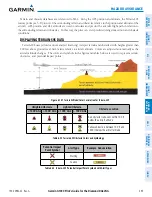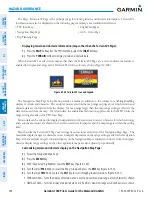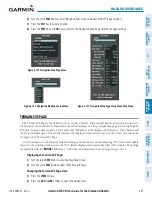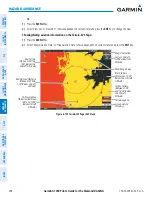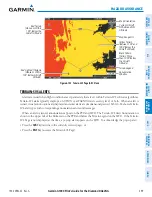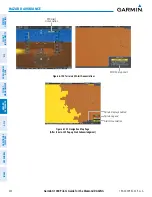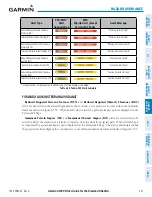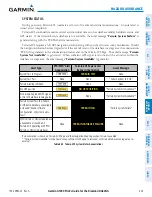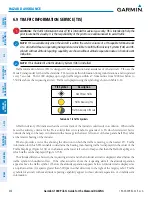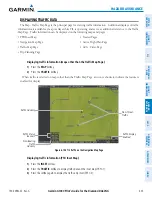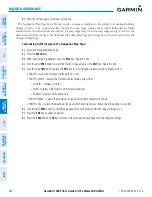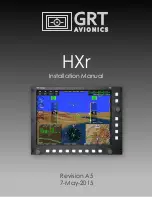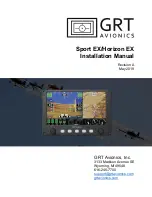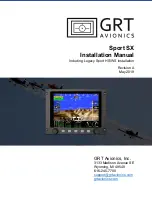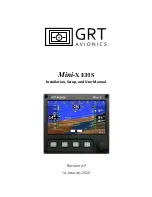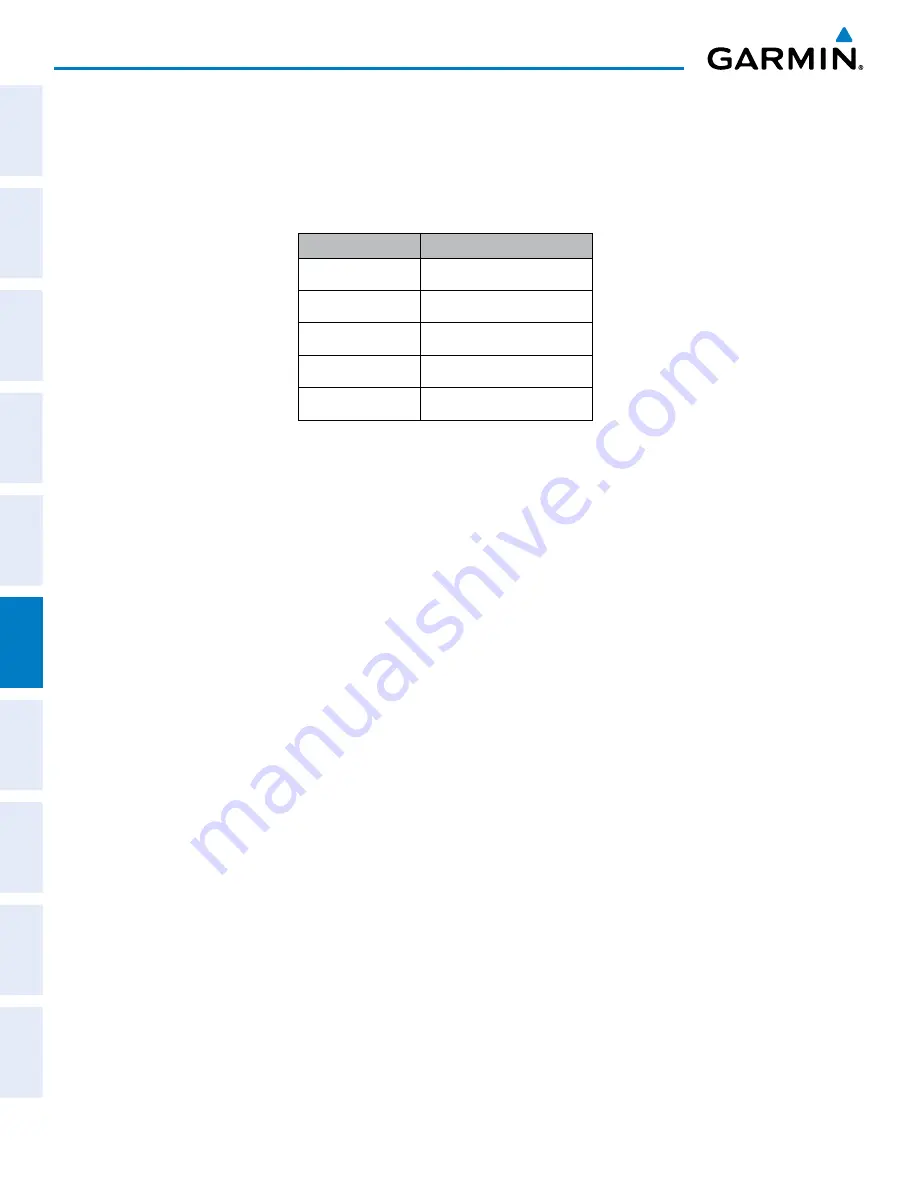
Garmin G1000 Pilot’s Guide for the Diamond DA42NG
190-00-00962-02 Rev. A
392
HAZARD AVOIDANCE
SY
STEM
O
VER
VIEW
FLIGHT
INSTRUMENTS
EIS
AUDIO P
ANEL
& CNS
FLIGHT
MANA
GEMENT
HAZARD
AV
OID
ANCE
AFCS
ADDITIONAL FEA
TURES
APPENDICES
INDEX
The Profile View is based on the current aircraft track (or heading if track is unavailable) and shows the
highest
known terrain or obstacles within a predetermined width from the present aircraft position to the end of the
profile range. The width of the Profile View (Table 6-21) is determined by the phase of flight, as annunciated
on the HSI. Refer to the Flight Instruments section for more information about flight phases.
Flight Phase
Total Profile View Width
Approach
0.6 nm
Departure
0.6 nm
Terminal
2.0 nm
Enroute
4.0 nm
Oceanic
4.0 nm
Table 6-21 Profile View Width Scale
PROFILE PATH
The Profile Path displays the horizontal and lateral boundaries of the Profile View. The path is shown
as a white rectangle on the Navigation Map Page (Figure 6-143) and is only available when Profile View is
enabled. White range markers both edges of the Profile Path rectangle match the range markers along the
distance scale inside the Profile View display window whenever the profile range is at least 4 nm (or 7.5 km
if configured for metric units).
The Profile Path rectangle may be configured on or off, and the Navigation Map range at which the Profile
Path is removed from map display can be changed.

